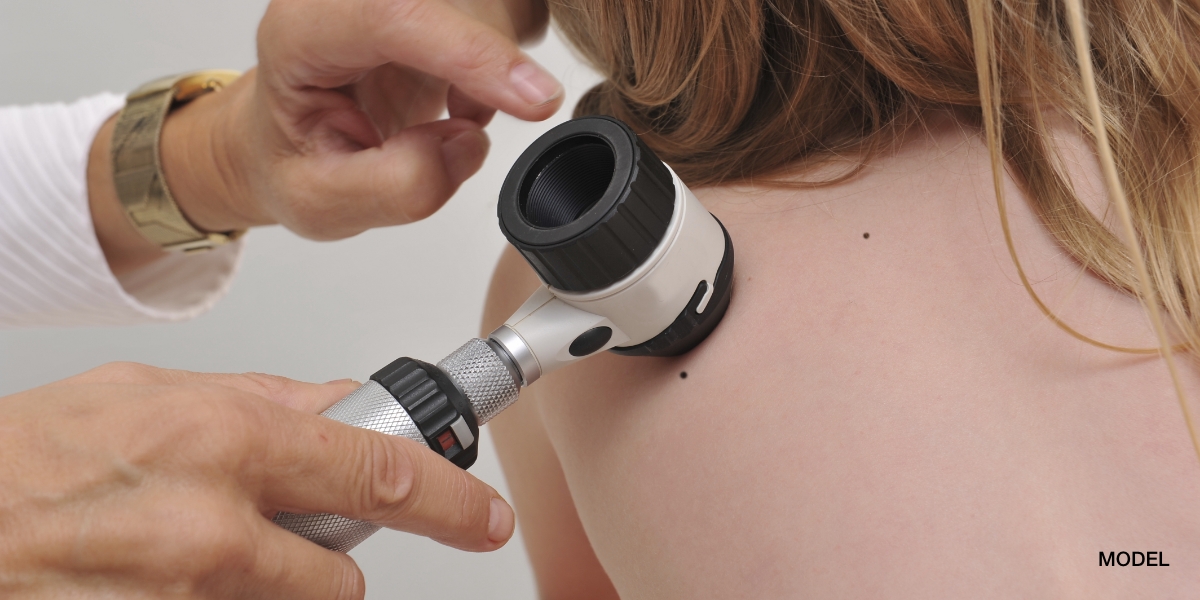In many female patients who develop adult acne, they note that this acne is much different than the type of acne they had as a teenager. Some adult women are susceptible to an acne that is caused by their normal hormones. These patients experience this acne as fluctuations with their menstrual cycle, and others report that it is more constant throughout the month. Hormonal acne is not an indicator that a patient has abnormal hormone levels, although it can be in certain medical conditions such as polycystic ovarian syndrome (PCOS). Most patients with hormonal acne have completely normal hormone levels but the acne is caused by the sensitivity of the hormone receptors in their skin to the circulating levels of hormones. Typically, this acne manifests as very deep seated cysts affecting the mid to lower face. Usually, the forehead is spared. Topical medicines are not very effective due to the depth of the acne lesions. Thus, antibiotics and androgen blockers are the mainstay of treatment in this acne subtype. In most patients, I begin a six month course of doxycycline 100mg twice a day and Spironolactone 50mg once a day. Spironolactone is used at much higher doses by cardiologists and primary care physicians as an antihypertensive (blood pressure lowering medicine). Dermatologists use this medicine at much lower doses as it blocks the hormone receptors in the skin. It has no effect on the circulating levels of hormones in the body, but simply prevents the hormones from interacting with the skin and causing acne. The anti-acne effects of spironolactone can take up to 6 months to work, so for more immediate results I prescribe doxycycline. At the six month follow up visit, I usually begin to wean the patient from doxycycline by using it daily or discontinuing it completely. The spironolactone dose can be titrated up to 100 mg per day depending on the patient’s response. I always check a potassium level at the six month follow up visit and then every 6 months, because at the higher cardiology doses spironolactone can elevate potassium although it is very rare for this to happen with our lower dermatology doses. It is important for the female patients taking spironolactone and doxycycline to not take them while pregnant as they are both contraindicated in pregnancy. Another excellent treatment for hormonally induced acne cysts is injecting them with intralesional kenalog (steroid). This is done with a very dilute amount of kenalog and an extremely small needle (30 gauge). These injections can provide immediate relief and resolution of the acne cysts within one to two days.
August 26, 2010

Medically reviewed by Anthony J. Perri, M.D.
You May Also Like



Request a Consultation (Sidebar)
Recent Posts
Categories
- Uncategorized (512)
Tags
acne (6)
acne treatment (3)
acne vulgaris (2)
basal cell carcinoma (2)
biopsy (3)
cold urticaria (1)
common skin conditions (11)
dermatologist (15)
dermatology (7)
dr. perri (8)
dry skin (1)
eczema (2)
filiform (1)
health (3)
Herpes (1)
herpessimplex (1)
hives (2)
indentification (1)
keratosis pilaris (1)
Lichen Planopilaris (1)
melanoma (2)
moles (3)
periungual (1)
perri dermatology (10)
prevention (2)
rashes (2)
rosacea (3)
rosacea therapy (2)
skin cancer (6)
skin cancer screening (5)
skin care (2)
skin checks (8)
skin condition (6)
skin conditions (8)
skin damage (2)
skin exam (8)
summertime (3)
sunburn (3)
sunburns (2)
Sunprotection (1)
sunscreen (2)
virus (1)
warts (2)
why perri dermatology (3)
woodlands dermatologist (6)
